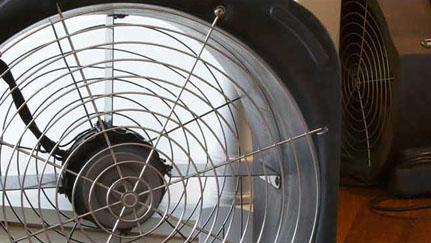Understanding and preventing mold growth in your home

Molds are part of the natural environment and can be found everywhere — both indoors and outdoors. They also can cause numerous issues for your home and health. Scientists have identified more than 1,000 types of mold and mildew inside homes in the United States.1 With the presence of moisture, mold can grow on wood, drywall, ceiling tiles, carpet, fabric and upholstery, causing significant damage to your home.
Common causes of mold growth in homes
Humidity: High humidity in your home can lead to condensation and water accumulation, making the environment for mold growth more favorable.
Leaking pipes: Water leaks can go undetected, giving mold more time to grow.
Roof leaks: Cracks and damage to the roof of your home can allow moisture to enter into the roofing structure. This moisture can lead to sagging and increased potential for mold.
Poor ventilation: Ventilation helps to dry out moisture, which can lead to mold. Areas of your home with poor air flow can increase potential for mold growth.
Damp basements: The basement is a part of your home that can have poor ventilation, thus making it an area prone to water leaks, condensation and flooding. If you notice dampness in your basement, this could be a sign of a potential mold problem.
Preventing mold growth
The best way to control mold growth is to control moisture. Nationwide Private Client® Risk Solutions recommends the following simple and low-cost steps to help prevent mold in your home:
Keep humidity levels in your home as low as you can. Running an air conditioner or dehumidifier can help keep humidity at an appropriate level. The National Institute of Environmental Health Services recommends keeping humidity in the home at or below 50%.2
Regularly check for leaks in your home’s roof, walls and plumbing. Identifying and correcting these types of problems quickly keep mold from having a chance to grow. Work with a licensed plumber, as needed.
If your home does suffer water damage, clean up and dry out your home thoroughly and within 24-48 hours of the water intrusion. We recommend you contact a water mitigation service company since these specialists have the right equipment and experience to mitigate the amount of damage and prevent secondary damage from mold or rot.
Ensure that the ground is properly graded away from the foundation of your home. Improper grading can allow water to collect and penetrate the foundation of your home, leading to moisture intrusion and increasing the potential for mold.
Run the bathroom fan or open a window when using the shower so moisture can escape.
Use household cleaners that contain mold-killing ingredients, such as bleach.
Avoid using carpeting in areas of the home that may become wet. If you do use carpeting in these areas, consider area rugs that can be laundered and dried regularly.
If you experience water damage in your home, contact your insurance agent or call us directly at 1-855-473-6410 to report a claim. Be sure to save any receipts from incurred expenses to help process your claim.
If you have any questions, please contact your agent or Nationwide Private Client Risk Solutions professional. For more information on how you can help prevent losses, visit nationwide.com/solutionseries.
We offer this information to assist you in making decisions that can help mitigate your risk. While we cannot address every possible scenario or guarantee these tips will work for you, our goal is to support your efforts to protect yourself and your family.